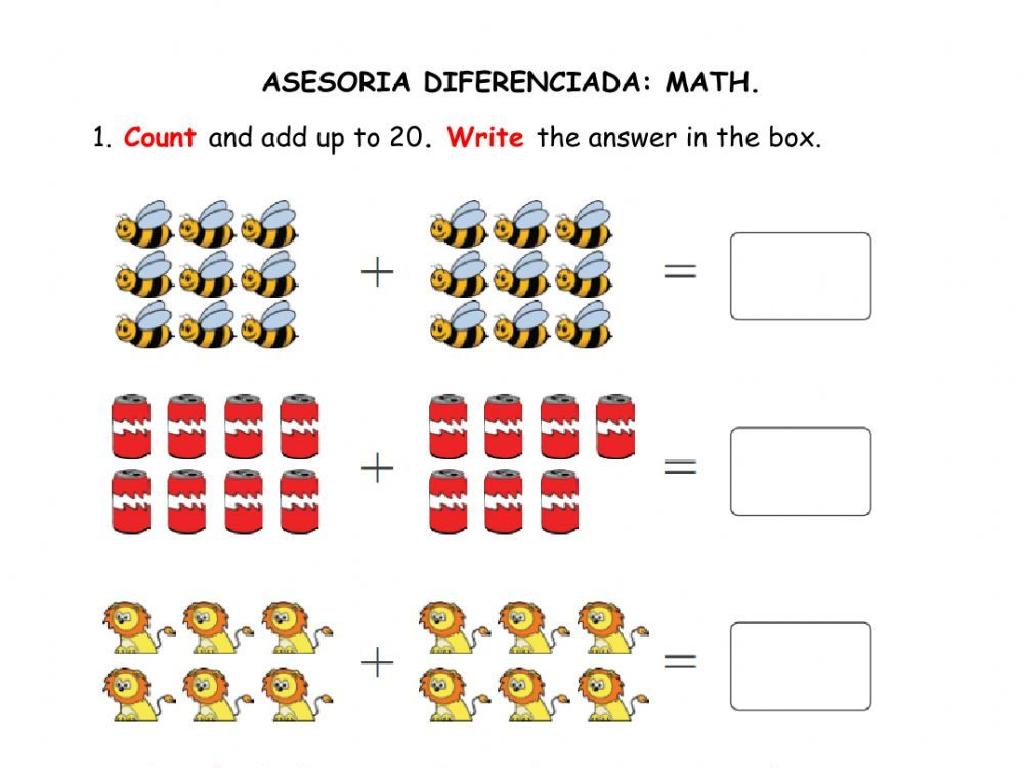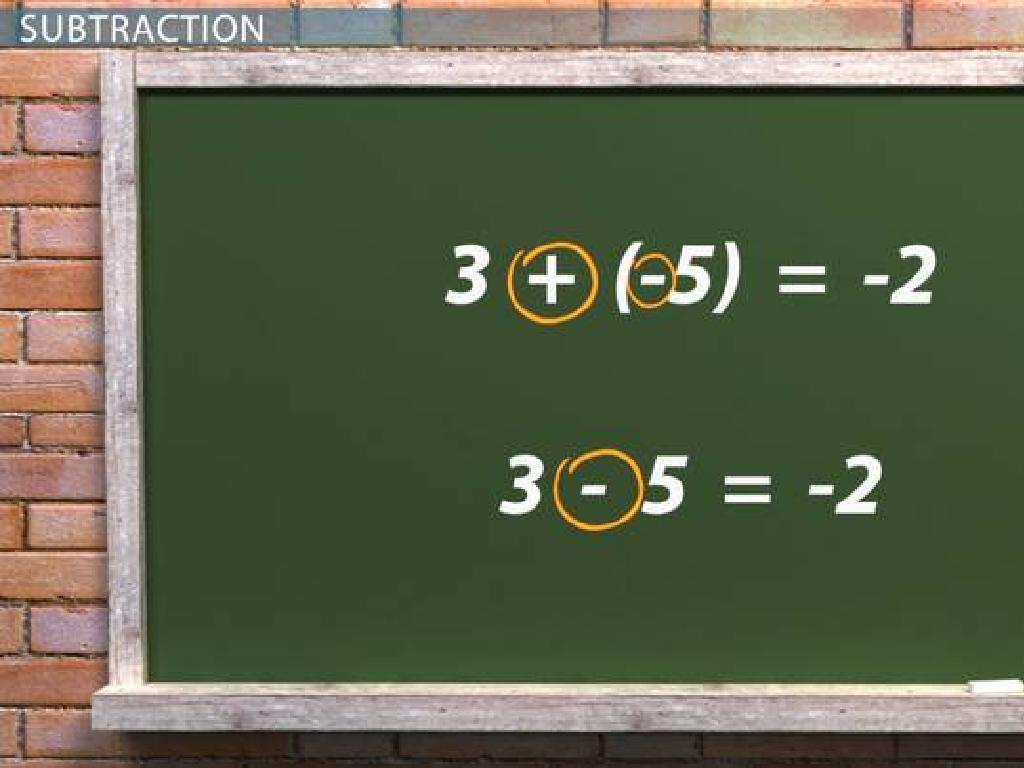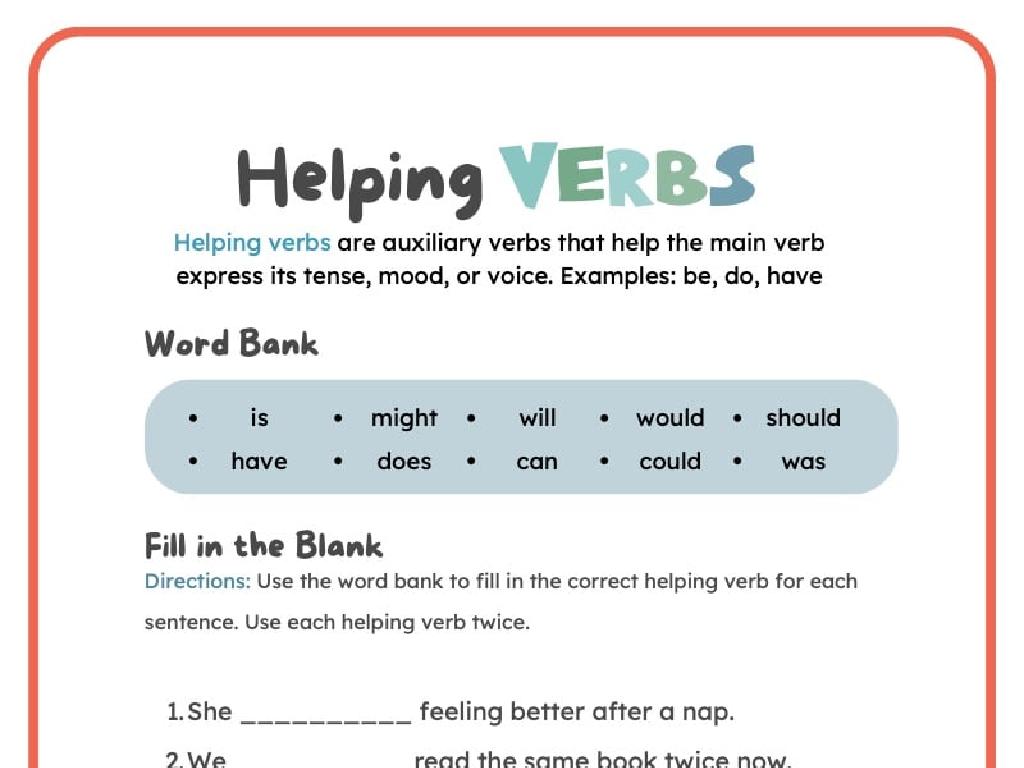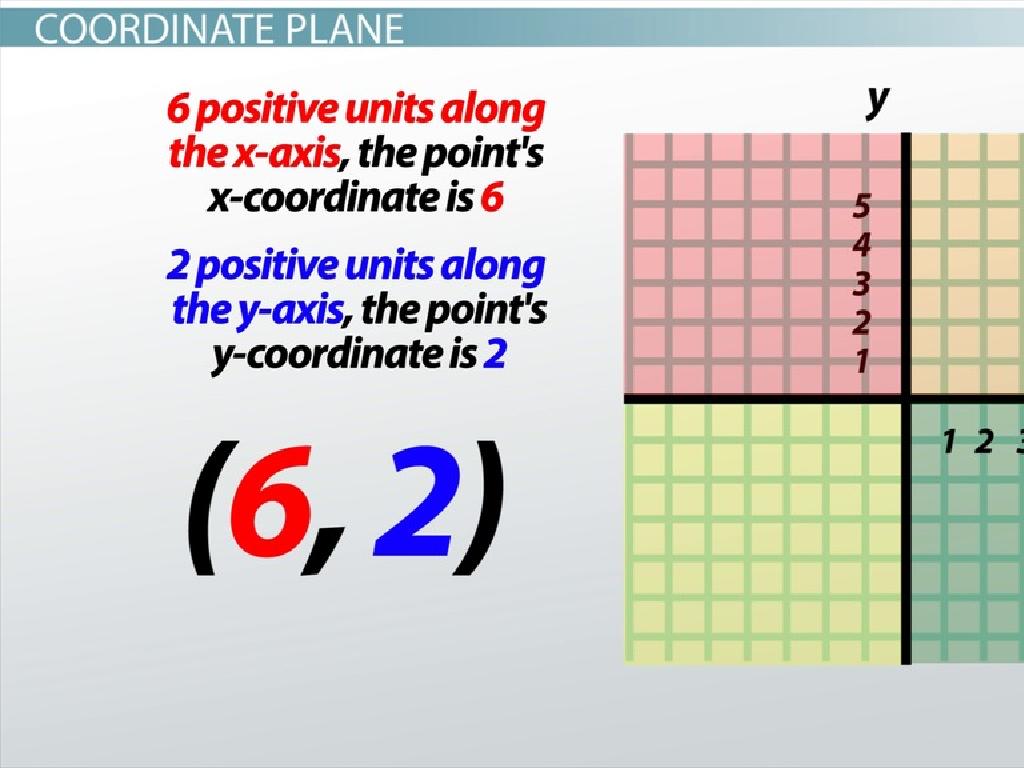Add 3 Or More Decimals: Word Problems
Subject: Math
Grade: Fourth grade
Topic: Add And Subtract Decimals
Please LOG IN to download the presentation. Access is available to registered users only.
View More Content
Adding Decimals in Word Problems
– Welcome to decimals!
– Why adding decimals matters
– Useful for money, measurements, etc.
– Steps for adding 3+ decimals
– Line up the decimal points and add
– Practice with real-life examples
– Example: Adding prices or distances
|
This slide introduces the concept of adding decimals, a fundamental skill in mathematics that is widely applicable in everyday life, such as in financial transactions and measurements. Emphasize the importance of understanding decimals to perform accurate calculations. Walk through the process of adding decimals by aligning the decimal points and adding as with whole numbers. Provide examples such as adding amounts of money or combining different lengths. Encourage students to think of situations where they might need to add decimals. The goal is to ensure students are comfortable with the concept and ready to tackle word problems involving the addition of three or more decimal numbers.
Review of Decimals: Understanding Place Value
– What are decimals?
– Decimals in daily life
– Prices, measurements, and time
– Place values: tenths, hundredths
– Each place after the decimal represents a part of 10
– Example: 0.5 and 0.75
– 0.5 is 5/10, 0.75 is 75/100
|
Begin with a brief review of what decimals are, emphasizing their use in everyday situations such as money, measurements, and time to make them relatable for the students. Reinforce the concept of place value by explaining tenths, hundredths, and thousandths. Use visual aids like decimal grids or money to illustrate the concept. Provide clear examples, such as 0.5 representing five tenths, which is the same as half, and 0.75 representing seventy-five hundredths. Encourage students to think of other examples of decimals they encounter in daily life. This foundation will help them understand how to add decimals in word problems.
Adding Decimals: Aligning Decimal Points
– Align decimal points vertically
– Write numbers in a column
– Example: 0.75, 3.6, 0.092
– Place 0.75, 3.6, and 0.092 above each other so the decimal points make a straight line
– Add them up carefully
– Ensure each place value lines up correctly before summing
|
When teaching students to add decimals, the first crucial step is to align the decimal points. This ensures that each place value is correctly positioned for addition. Have students practice writing numbers in a column format, with decimal points lined up. Use the example provided to demonstrate how to align different decimals with varying lengths. Emphasize the importance of adding zeros where necessary to keep the columns straight. After aligning, guide students through the process of adding the numbers, ensuring they understand to start from the rightmost digit and move left. Encourage them to check their work by estimating the sum before calculating.
Adding Decimals: Step by Step
– Begin with the rightmost digits
– Start from the smallest place value, like cents in money.
– Carry over sums more than 9
– If a column adds up to 10 or more, carry over to the next column.
– Align decimal points in sum
– Decimal points must be in a straight line down the page.
– Practice with word problems
– Use real-life examples like adding money amounts.
|
This slide is designed to teach students the process of adding decimals in a step-by-step manner. Emphasize starting from the rightmost digit, which is the smallest place value, and compare it to adding cents in money to make it relatable. Explain carrying over when the sum exceeds 9, similar to adding whole numbers. Stress the importance of aligning decimal points to avoid confusion. To reinforce learning, provide word problems that involve adding decimals, such as combining different money amounts, to apply these steps in a practical context. Encourage students to work through problems methodically and check their work by ensuring decimal points are aligned.
Adding Decimals: Shopping Word Problem
– John’s shopping total calculation
– John bought items for $2.35, $1.20, $0.99
– Align decimals vertically
– Place $2.35, $1.20, $0.99 one under the other ensuring decimal points line up
– Add the amounts together
– Perform column addition starting from the rightmost digit
– Find the total cost
– Sum up to see John’s total expense
|
This slide presents a practical application of adding decimals through a relatable shopping scenario. Students will learn to align decimal points and add the numbers to find the total cost of items. Emphasize the importance of stacking the numbers so that the decimal points are in a vertical line, which ensures accurate addition. After adding, discuss how to correctly place the decimal point in the answer. This exercise will help students understand the concept of adding decimals in a real-world context. Encourage students to practice with similar problems and verify their answers by estimating the sum before calculating.
Adding Decimals: Lisa’s Running Log
– Lisa’s running distances
– Monday: 3.25, Wednesday: 2.75, Friday: 4.5 miles
– Aligning decimals vertically
– Stack numbers so decimals are in a line
– Adding the distances together
– Add each column starting from the right
– Finding the total distance
– Sum up to find how far Lisa ran in total
|
This slide presents a word problem to help students practice adding decimals. The problem involves adding three distances that Lisa ran over a week. Start by writing each distance clearly, then show students how to align the decimals vertically to ensure accurate addition. Emphasize the importance of adding from right to left, starting with the smallest place value. After adding, guide students to correctly interpret the sum as the total distance Lisa ran. Encourage students to solve similar problems and to always check their work for proper decimal alignment.
Class Activity: Grocery Shopping Challenge
– Imagine grocery shopping
– List your items and prices
– Write down items like milk ($2.99), bread ($1.50)
– Add up the item costs together
– Use addition of decimals to sum up prices
– Find the total cost of groceries
|
This activity is designed to apply students’ knowledge of adding decimals in a fun and practical way. Have the students pair up and provide them with a mock grocery list where they will find items with prices in decimals. They should work together to add up the prices of the items to find the total cost. This will help them understand the importance of decimal addition in everyday life. As a teacher, walk around to assist with any questions and ensure they are correctly lining up the decimal points. Possible variations of the activity could include giving different lists to each pair for comparison of totals, or introducing discounts to calculate.
Conclusion: Mastering Decimal Addition
– Excellent work learning decimal addition!
– Align decimal points when adding
– Ensure each number’s decimal is in a vertical line
– Practice is key to perfection
– Solve different problems to become confident
– Continue with more word problems
– Apply skills to new challenges for mastery
|
Today, we’ve successfully tackled adding decimals through word problems, a crucial skill in math. Reinforce the importance of lining up decimal points, as this is a common area where mistakes can occur. Encourage students to practice regularly with a variety of word problems to solidify their understanding and build confidence. As they continue to practice, they’ll find that their ability to solve decimal addition problems quickly and accurately will improve. Remember to provide them with additional resources and problems to work on at home.






